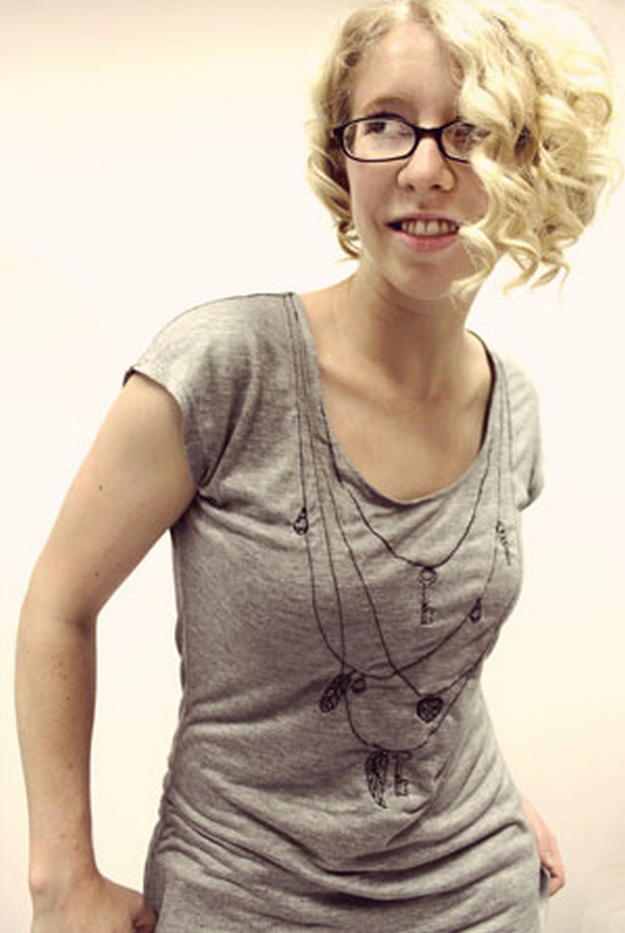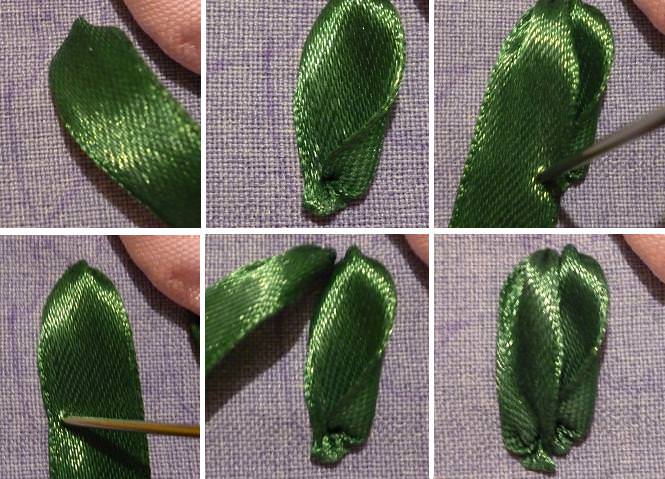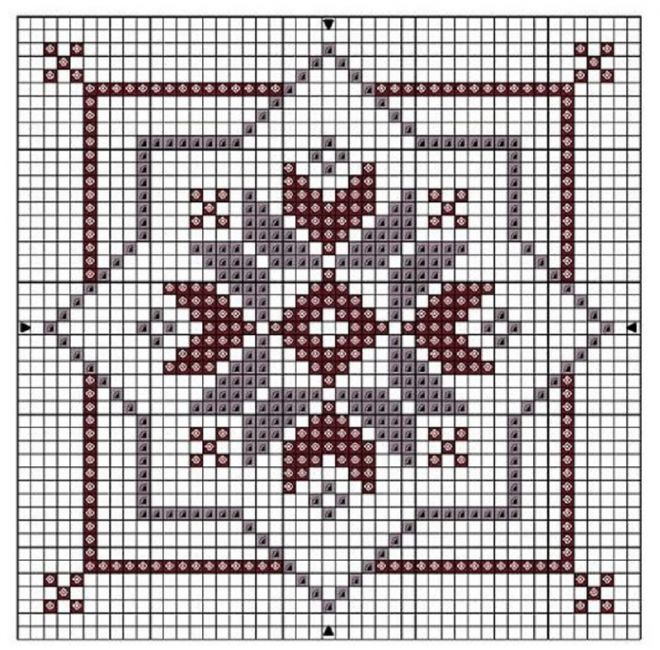
Style Provence in embroidery what it is (photo)
Content
- Materials and tools for embroidery
- Provence or Country
- Which topic to choose
- Approach to work
- Effective addition
- Video: how to embroider French bundle with ribbons
Provence is a style that is characterized bySoftness of shapes and colors, elegance and richness of lines. He appeared in France, where in his time he gained popularity in a few years, and continued to pleasantly please both noble masters and ordinary people, because at its basis are simple enough for both perception and reproduction elements. Up to now, it has come in a slightly modified form, which is clearly seen in the example of interior elements and the old photos. But in the embroidery, it almost did not change, except that the materials today are better than they were once.
Today, the notorious style is perceived asVital: household products can take the form of clocks, flowers, flowerpots, and much more. Cozy and interesting, this style easily finds its place in a modern house. And what is also important, this style can be developed, each time making the work more interesting. Such embroidery is not too hasty, it requires special skills. But the result is worth it!


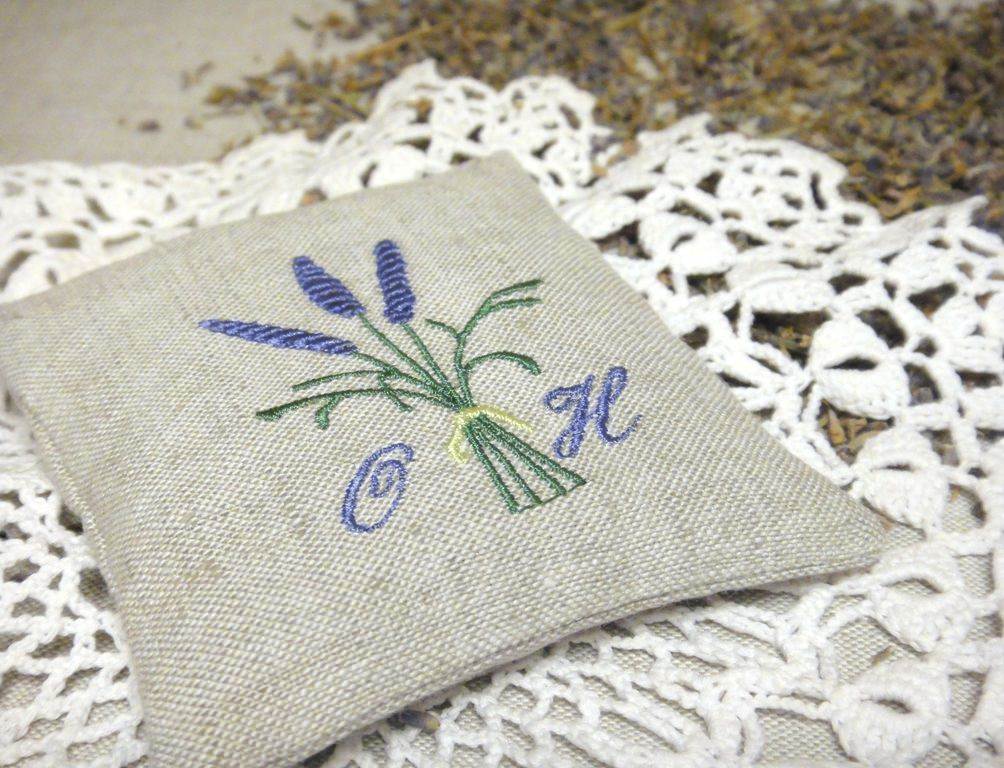
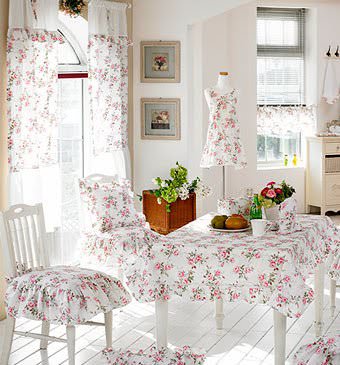

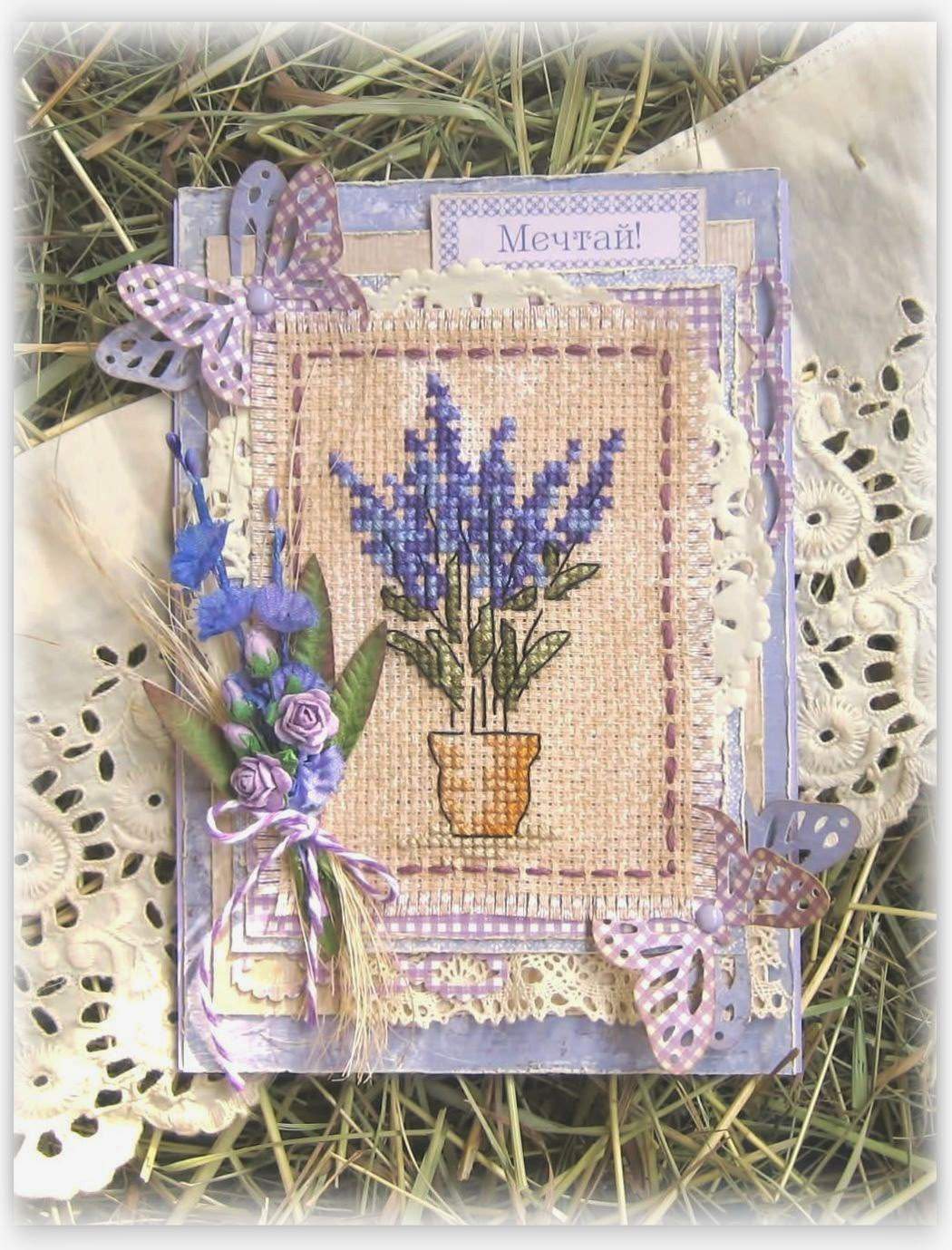
Materials and tools for embroidery
So, here's what we need:
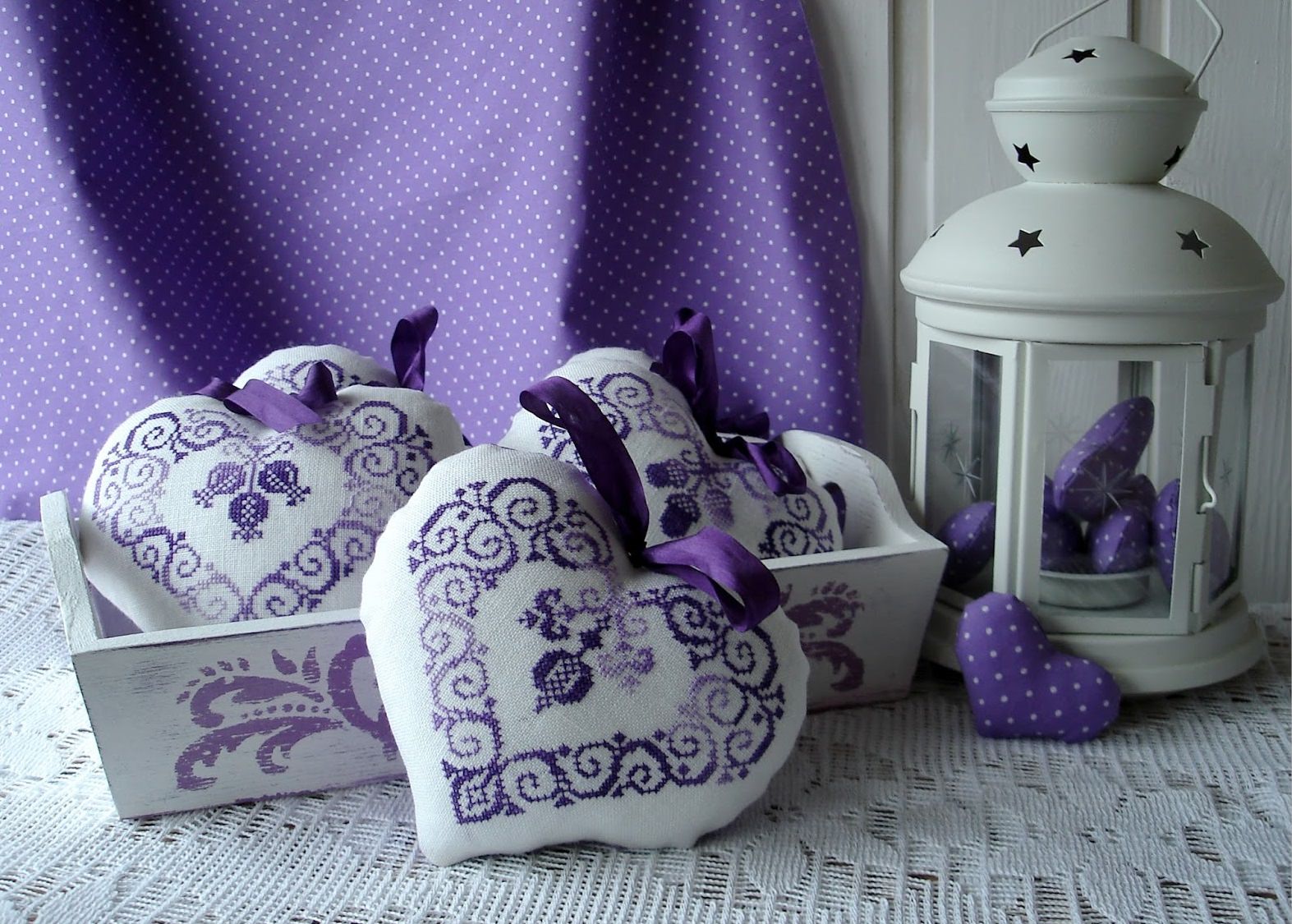
Needle. Any will approach. Since we are talking about cross-stitching, the best solution is to pick up a blunt needle - the material for work is not so thick and stiff that such a needle can not be dispensed with;- Threads. Suitable are very different. The color is chosen based on preferences. However, we can not say that the style of Provence must include at least one blue color, and preferably several of its shades, and purple. Effectively they will be complemented by white and green. The best material will be cotton;
- Fantasy. Although you can do and schemes. The most popular query in the search engine is embroidering flowers and various rural species - the outgoing road, a small house. Often from the threads create quite familiar interior details, such as watches, which are effectively complemented by the same colors of a small size.
Provence or Country
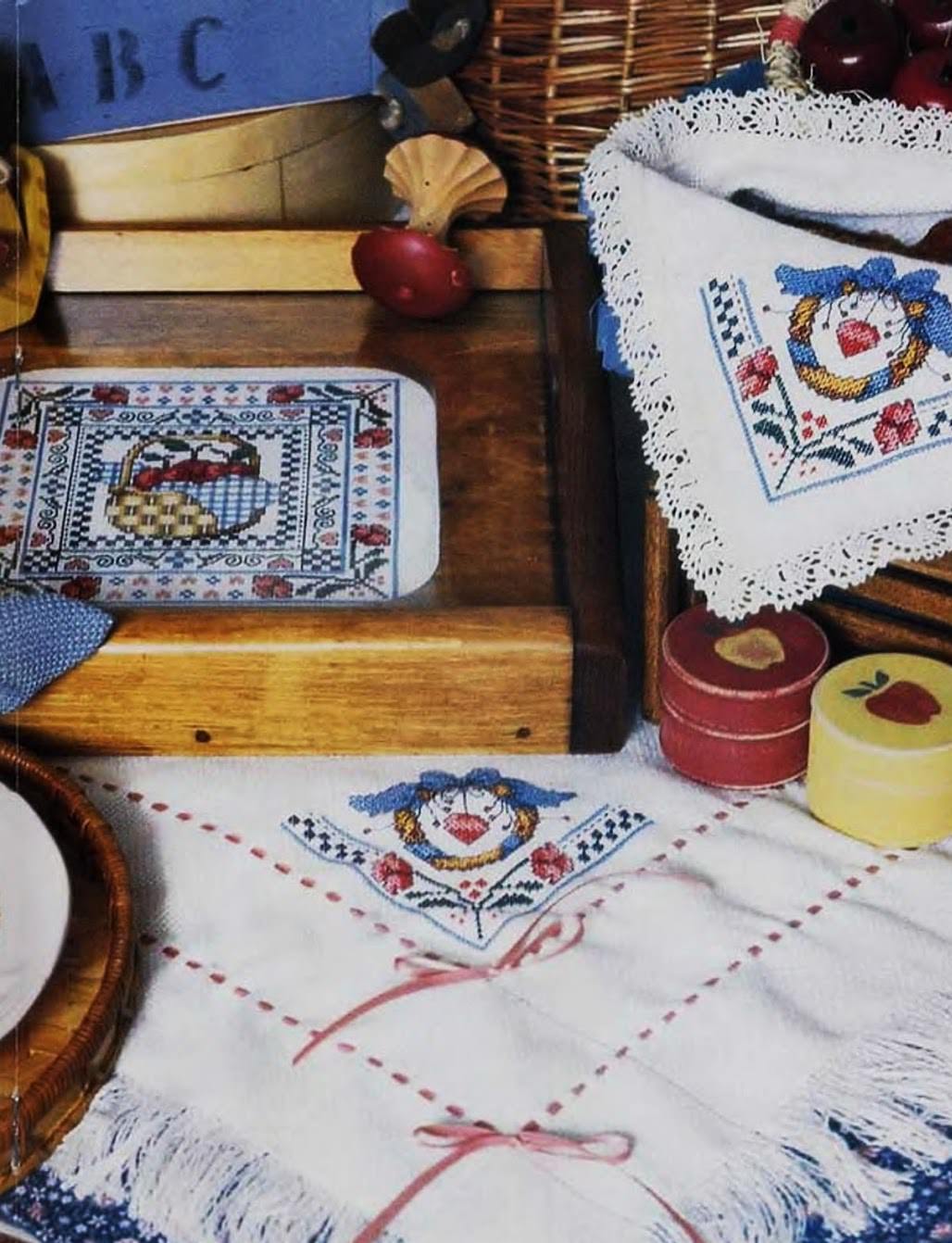
Embroidery in the style of "Country" Before you startIt is worth thinking about what will actually work with. Provence is associated with France, where the climate is warm and very mild. There grow grapes, a variety of fruits, fields are variegated with lavender and daisies. There is nothing surprising in the fact that the French do not like to paint with their bright colors in their embroidery - they have these colors right here, literally near the house. One photo of the southern regions of France dispels any misunderstanding.
"Country" also refers to England. The north-facing country with a harsh climate in many regions is more focused on the topic of the house. Actually, the nature of this style tends to different shades of brown, orange, red, but in general there is no pure white. This style is more eager to call on the northern home - the focus is the oven, the whole interior is made of wood, and occasionally flashing views from the windows are not full of colors such as everything else.
Of course, the style of Provence can not be unattractive for residents of northern countries who want to enrich their homes with colors.
Which topic to choose

When you have the right materials at hand, and the handAnd it drags on to start work, you need to think again about the topic of your work. You need to imagine some bright picture. The flowers already mentioned are perfect for work, combining both softness and richness of flowers. To them it is necessary to add elements from a tree, such as pots. The most reasonable is to embroider a kind of weaving of all elements, preferring bright shades only to those elements whose drawings occupy a central position. But they need to be diluted with white! Such a panel in the style of Provence will look great - the photos will give an idea of how it looks in the home.
Such embroidery will look nice in yourBedroom. Selected colors and not too bright, and not faded - yellow, light blue, brownish-greenish and green. Purely white colors almost never occur, although the style of Provence does not deny them. Color solutions can be gleaned from photos of different village houses.
As you can see, the style covers the theme of harvesting. Pears, apricots are found in works very often, and even more often grapes or wine, poured into glasses, or directly in bottles.
Wealth of motives is the guarantee of good work 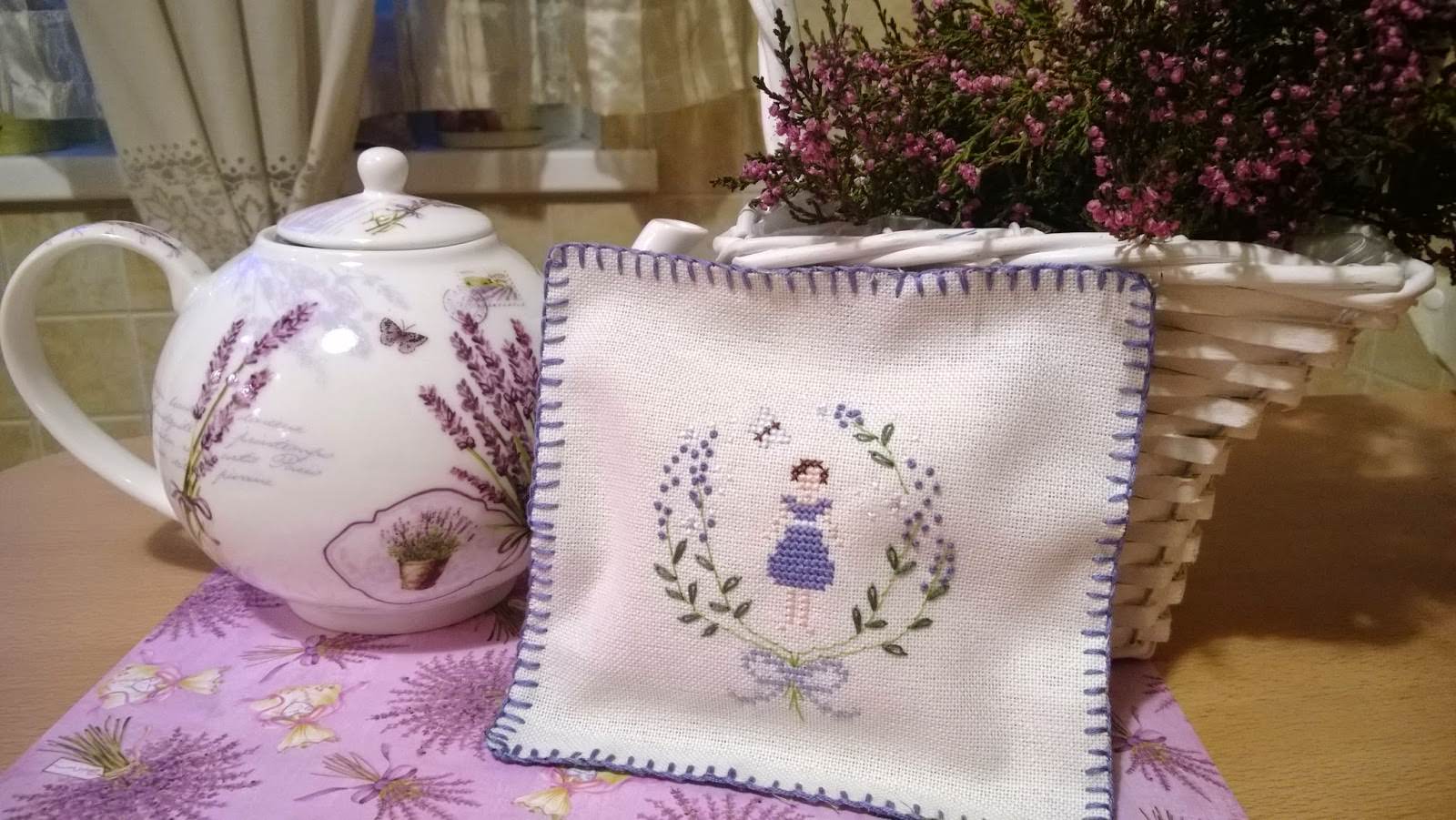
Just because Provence does not always lean towardsHome theme, the range of its application is expanding. The most complex works often tend to rural species, but supplement them with some elements. For example, a house that has pretty bright decorations. What is important, the color of these ornaments should not be too aggressive - you should avoid red and orange, preferring blue and purple. To embroider such a composition in the style of Provence to beginners is difficult.
If the product should complement the kitchen, the bestThe solution will agree colors, but in the product itself add a green. Have you heard about the style of Provence in the kitchens? Maybe they saw at least a photo of these cuisines? So, they are often light brown or white, with light shades of blue, but plant elements are stripped. Many are known for floral ornaments, in which there are a lot of flowers, but even more vines, leaves and branches - this ornament came from France, although it occurs in national embroideries of many countries. In this case, the embroidery easily fits into the design.
Approach to work
Since Provence is a style, that isSubcategory, there is another concept before it. The mentioned embroidery with a cross must be mastered ideally, so that the style can be reproduced in its work. Schemes are complicated, work on them can go on for a very long time.
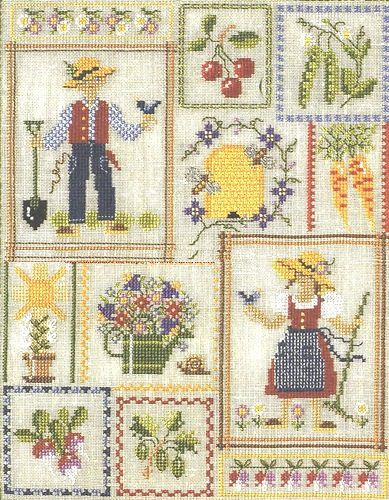
Work is on the canvas of Aida or white,Or stylized, that is, a variety of shades of beige. The canvas is also olive-colored. It is convenient, allows you to immediately estimate the finished product. In a word, those who are engaged in needlework and who are interested in the style of Provence do not part with such a fabric.
Remembering that under the cross is meant twoDiagonal stitch, which in doing this, having the same sequence, you need to be prepared to be patient. Repeating familiar sequences in a stitch, it's important not to forget about a particular style structure. It is enough to have threads of only 4-5 different colors, so that the final work was worthy to take a place in the apartment as a decorative element. Do not forget about purple - this color is considered to be one of the main in style, because of what it is sometimes called "lavender". For the first experiment, it is worth using simple schemes.
It is important to make each element of the embroidery unique. The easiest solution is to use threads of always different colors so that the other elements from them differ. It is not necessary to focus attention on one thing, but to make the composition uniform and not catchy. Again, it is worth to find a photo of the finished product, to study it, in order to better understand the style. Inexperienced in embroidering it is worthwhile to think about buying special sets - they include cloth, needles, fabrics, and, most importantly, schemes with manuals. Often, embroidering newcomers is introduced with the example of the style mentioned, so that it will quickly become clear.
Effective addition
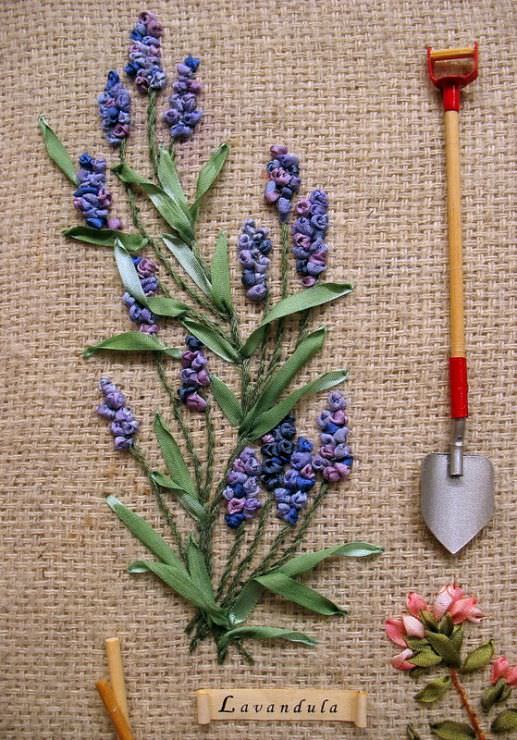
Nothing prevents the threads from preferring tapes. Embroidery with ribbons is much easier to sew with a cross, but it is not without its charm. So, for example, try to make a decoration for a tablecloth. It will be lavender - as bright and memorable as a flower from the Provence region.
We sew the fabric in the form of three branches with flowers,Which cross at a small angle. This will be the basis. Next, using a tapestry needle and a lilac ribbon, we will make stitches using the "French knot on the leg" technique. Should get one of the flowers - medium. The other two can be made from dark purple ribbons. The stalk should also be made from a green thread for knitting, stitching it with large stitches. The last element will be leaves from a wide dark green ribbon. You can add an elegant bow in the place where the stems intersect.
Well, that's all. A flower from a ribbon is the simplest work performed, which looks good on the same tablecloth, or a pillow and a napkin. We hope our photos will push you to many new ideas in this vein.

